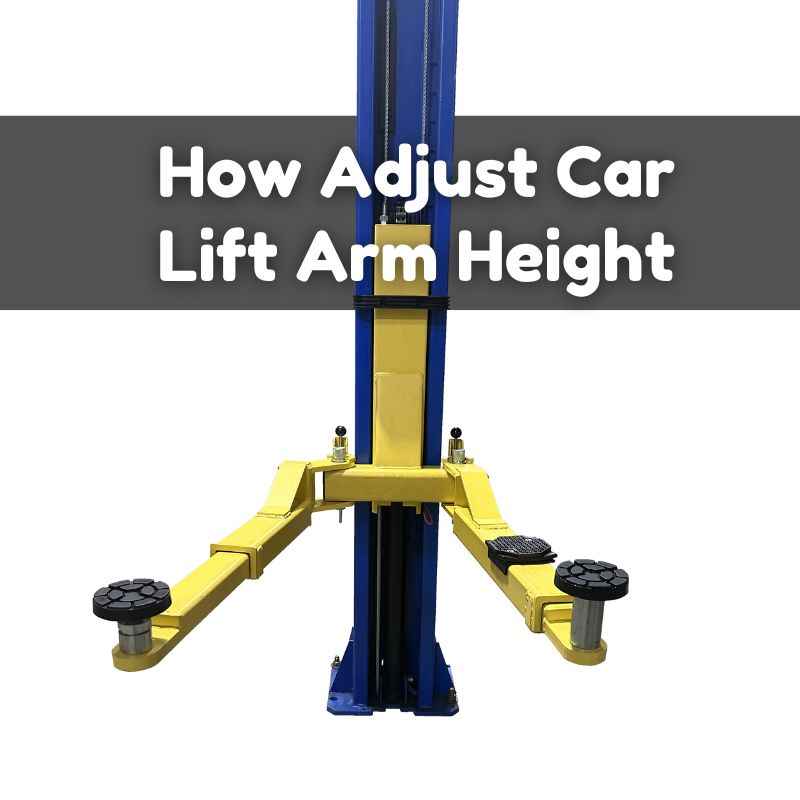
Adjusting the car lift arm height is essential for safe vehicle maintenance. A proper lift ensures safety and efficiency. In this guide, we will discuss how to adjust the height of car lift arms easily.
Why is Adjusting Car Lift Arm Height Important?
Adjusting the lift arm height is important for several reasons:
- Safety: Correct height prevents accidents.
- Stability: Ensures vehicle stays secure during repairs.
- Access: Provides easier access to vehicle parts.
- Efficiency: Saves time during vehicle maintenance.
Tools You Will Need
Before you start, gather the following tools:
- Adjustable wrench
- Socket set
- Safety goggles
- Gloves
- Car lift manual
Steps to Adjust Car Lift Arm Height
Step 1: Read The Manual
Always start by reading the car lift manual. Each lift model may have different adjustment methods. Familiarize yourself with the specific instructions for your lift.
Step 2: Ensure Safety First
Safety comes first when working with lifts. Wear safety goggles and gloves. Make sure the area is clear of obstacles. Also, check if the lift is in good condition.
Step 3: Lower The Lift
Lower the lift to its minimum height. This helps in adjusting the arms easily. Make sure the vehicle is not on the lift during this process.
Step 4: Locate The Adjustment Mechanism
Find the adjustment mechanism on the lift arms. This may vary by model. Look for knobs, bolts, or levers that control the height.
Step 5: Adjust The Arm Height
Use the adjustable wrench or socket set to loosen the adjustment mechanism. Turn or slide the arm to your desired height. Make sure both arms are at the same level for balance.
Step 6: Tighten The Mechanism
After adjusting, tighten the mechanism securely. This ensures the arms stay in place. Double-check that everything is tight and secure.
Step 7: Test The Lift
Before using the lift, test it with a small weight. Make sure everything operates smoothly. Check for any unusual noises or movements.
Common Mistakes to Avoid
When adjusting car lift arm height, avoid these common mistakes:
- Not reading the manual: Always read the specific instructions.
- Ignoring safety: Never skip safety gear or checks.
- Uneven adjustment: Always adjust both arms equally.
- Skipping tests: Always test the lift before full use.
Best Practices for Using Car Lifts
To ensure optimal performance of your car lift, follow these best practices:
- Perform regular maintenance checks.
- Keep the area around the lift clear.
- Train all users on proper lift operation.
- Use the lift only for its intended purpose.
- Inspect the vehicle before lifting.
Conclusion
Adjusting car lift arm height is straightforward. Follow the steps outlined above. Always prioritize safety and proper technique. Remember, a well-adjusted lift helps ensure efficiency during vehicle maintenance. Happy lifting!
Frequently Asked Questions (FAQs)
1. How Often Should I Adjust The Lift Arm Height?
Adjust the lift arm height whenever you change vehicles. Different vehicles require different heights.
2. Can I Adjust The Lift Arm Height Alone?
While you can adjust it alone, having a helper makes it safer. Always prioritize safety.
3. What If The Lift Does Not Raise Evenly?
If the lift does not raise evenly, check the adjustments. Ensure both arms are set to the same height.
4. Is It Safe To Use An Older Lift?
Older lifts can be safe if maintained properly. Always inspect for wear and tear.
5. What Should I Do If I Feel Unsure?
If unsure, consult a professional. It’s better to be safe than risk an accident.
